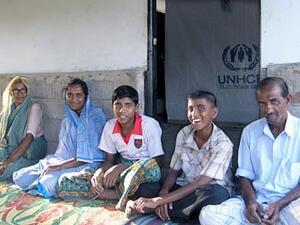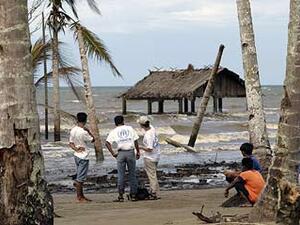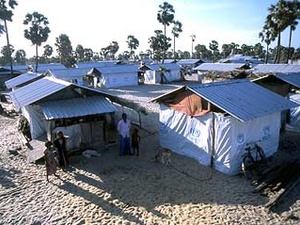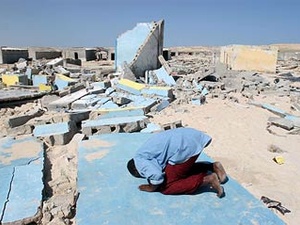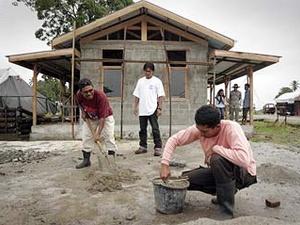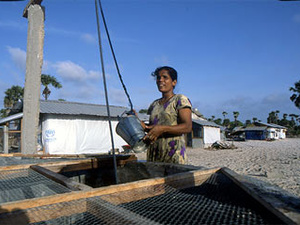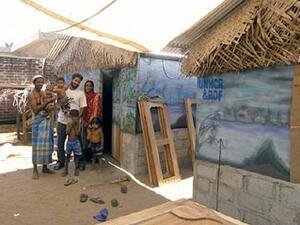Tsunami response: Sri Lanka
Tsunami response: Sri Lanka
In Sri Lanka, more than 150,000 tsunami-displaced people have so far received UNHCR's non-food relief items, including 26,000 pieces of plastic sheeting, 32,000 mats, 15,000 mosquito nets, 15,000 kitchen sets and 17,000 items of clothing. Distribution continues on a daily basis.
In addition, UNHCR has sent 1,000 tents to the south (Matara and Kalutara) and east (Ampara), with another 1,000 going north to Vavuniya. An additional 5,500 tents are on their way by sea from Jordan expected to arrive in mid-February with another 2,500 coming from Pakistan. In all, UNHCR is providing 10,000 tents to the Sri Lankan authorities, enabling the displaced people to live in safe and adequate shelter as civil services like schools and health care to resume in the vacated public buildings. We are also providing a further 12,000 plastic sheets expected to arrive in mid-February from China.
UNHCR and its partners this week reached an agreement with the government on a transitional shelter strategy for the tsunami-displaced before their homes can be rebuilt for return. Two models have been developed - the first is a moveable building, the second is shelter materials to repair partially damaged homes. As part of the second phase of transitional shelter, UNHCR will be distributing 300,000 tin sheets at a cost of US$3 million, ceiling wood beams at a cost of US$65,000, and other locally purchased construction materials such as cement gravel, wood and nails.
On the protection front, UNHCR continues to monitor and target assistance to extremely vulnerable displaced people like widows, children and the elderly in areas like Matara in the south. The agency's staff are also talking to Muslim widows in Batticaloa in the east to assess their needs now that they have lost their spouses, houses and livelihoods.


